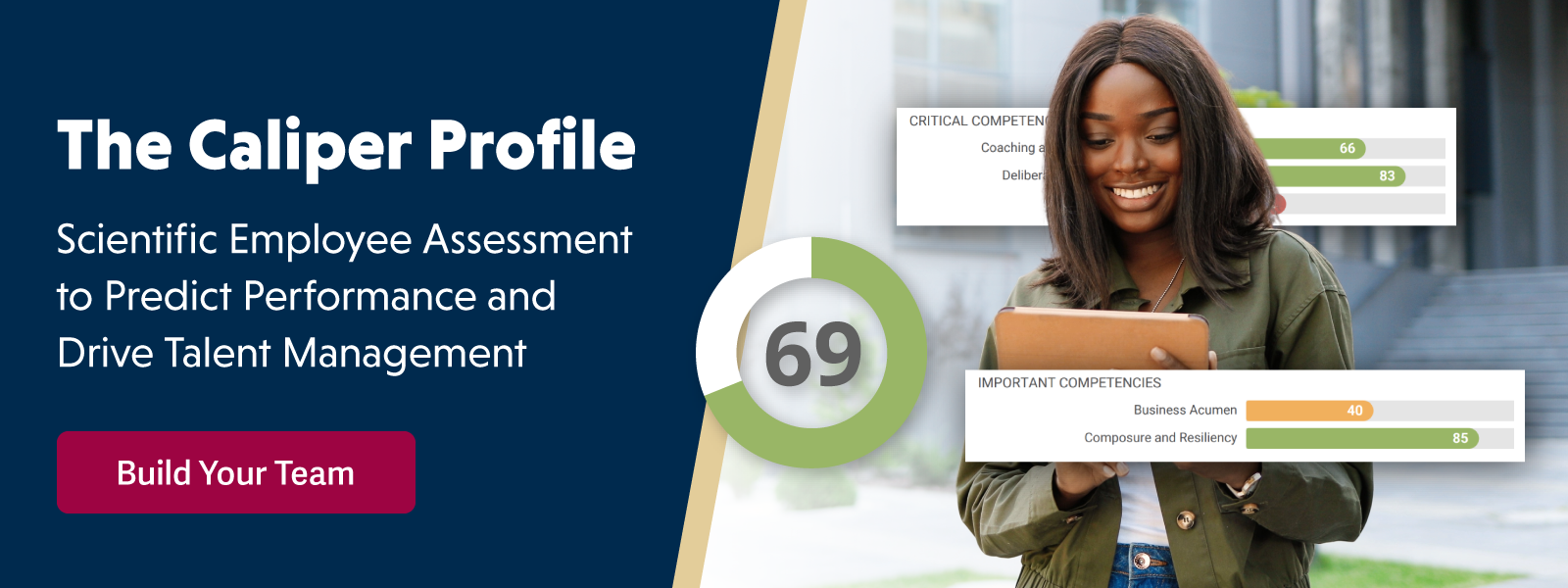In life, change is inevitable. Your reaction to that change can dramatically impact not only your outcome but your success down the road.
That’s why it’s crucial to focus on building resilience within yourself and your teams.
Resilience is what gives us the strength to cope with the stressors and hardships around us and bounce back from them. While resilience will not help to eliminate the stressors in your life, it will help you to develop productive ways to process and recover from traumatic events.
The tricky part about resilience is that it’s not something that comes naturally to everyone. You have to actively work towards it to build the skill within you which is very achievable if you put in the time and effort. One such strategy involves reframing your approach to training and learning. By embracing a Blended learning approach, you can give yourself and your team the resources they need to hone their own skills and resilience.
@CaliperCorp breaks down the topic of #BlendedLearning in their latest blog. See why you should embrace a #flexible approach to #Learning and #Development: Share on XWhat is Blended Learning?
Blended learning is the combination of online learning approaches mixed with offline, in-person instruction. This approach offers individuals more control over the time, place, and pace of their experience, granting them the power to dictate their own path. By combining online learning with instructor-led sessions, participants enjoy a blend of e-learning and traditional learning.
The future of work is gearing up to be flexible, and your approach to learning and development should follow suit. Blended learning opens the door to more growth and training opportunities since it works around the needs and schedules of each individual.
Building Resilience With Blended Learning
When it comes to building resilient employees, the key is to promote a culture of flexibility. Learning how to handle sudden changes and setbacks is crucial to be prepared for when a disruptive event actually comes about. And, as we discussed earlier above, blended learning is a highly flexible and customizable approach to learning and development. Your team will see benefits from following a blended learning approach like:
- Reduced spending — web-based training is more cost-effective and easier to access than traditional learning strategies. Without conventional barriers like location and cost, employees enjoy access to a greater number of opportunities.
- Customized training — your team is in charge of their development path and the time it takes to achieve it. By focusing on the areas of training they need most, they can increase the likelihood of knowledge retention.
If the events of the past year and a half have shown us anything, it’s how quickly our routines can change. After having had to adjust to remote work, virtual learning, online classes, and zoom sessions, we’ve seen that offering a digital platform for training and collaboration works. With easier access to information and communication tools, your employees can navigate their own growth and development path.
With the support of #BlendedLearning, employers can start building and enhancing the #resilience of their employees. See how in @CaliperCorp’s latest blog: Share on XImplementing Blended Learning In Your Workplace
The nice thing about implementing blended learning into your workplace? It’s simple! All you need to do is follow four simple steps to get started:
1. Survey Your Team
Talk with your managers, SMEs, existing employees, and leaders to gather insight into their professional development goals. What do they hope to learn more about? How best do they retain information? What method of learning do they prefer? Use these answers to identify what needs your team has and what they hope to improve upon.
2. Discuss Your Approach
Now that you know what employees want to improve upon, talk with them about how best to work together to obtain this goal. Are you able to provide them with an e-learning solution so that they can learn on their own time? Or is an instructor-led course more fitting? Collaborate to build out an approach to learning that works for both parties.
3. Combine Strategies
The glory of blended learning is that it combines all of the resources and flexibility of virtual learning with all of the support and insight of instructor-led courses. This means that you can incorporate all your educational resources to help your employees grow within their skills.
4. Gather Feedback
Before, during, and after each stage of the development cycle, you should talk to your teams and gather feedback on the process. Have you been providing everything that they need to further their learning? What parts of the process are working well, and which need to be improved? Are there a sufficient number of both online resources and in-person opportunities? Once you have the answers to questions such as these, you can begin adjusting your strategy for the future.
A highly skilled, highly resilient workforce is possible. If you devote ample time and energy, you can devise a solid development strategy. By embracing a flexible approach to learning and development like blended learning, you can start strengthening the independence and resilience of your employees. The result? A more talented workforce that is better equipped to withstand any disruptions the future may bring.
Your workforce is ready to reach its full potential, and we want to help you. By utilizing a blended learning approach, you can equip your team with the skills they need to succeed at the pace that works for them.


